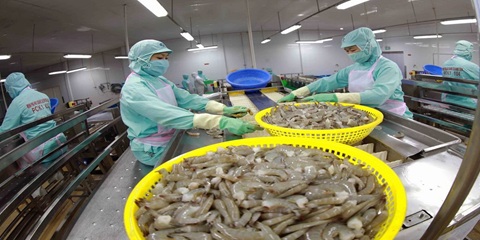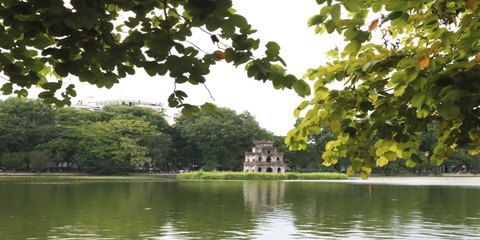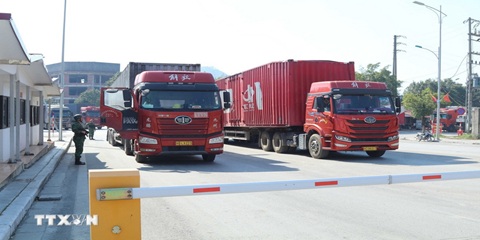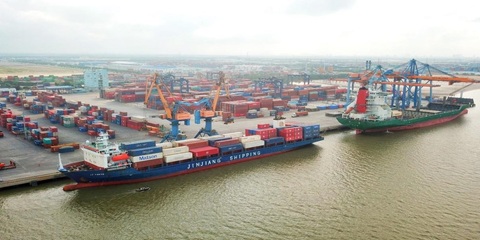Want to be in the loop?
subscribe to
our notification
Business News
HO CHI MINH CITY SUBURBAN REAL ESTATE MARKET SET FOR REVIVAL
After a lengthy period of inactivity, the real estate market in and around Ho Chi Minh City is resuming deals, mostly in new full-scale developments. Property prices in the central district of Ho Chi Minh City have risen to such an extent that many young people are choosing to purchase homes in the suburbs, where costs are more affordable.
In the southern area, the provinces bordering Ho Chi Minh City, such as Dong Nai, Long An, and Binh Duong, more and more items catering to the requirements of locals and Ho Chi Minh City workers are surfacing at affordable costs, and the link to the centre is strengthened.
According to existing evidence, several significant metropolitan districts in Long An are catching the attention of individuals with genuine housing requirements and investors.
In Nam Long Group's Waterpoint Urban Area, for instance, in addition to townhouses, villas, and riverfront villas, there are also economical EHome Southgate apartments, starting at around $42,400 per unit. The project's current phase involves the development of a new subdivision, while prior stages include heavily inhabited areas.
Izumi City, Nam Long Dai Phuoc, and Aqua City are the most notable real estate developments in Dong Nai, becoming the preferred housing option for individuals who want a decent lifestyle without being too distant from Ho Chi Minh City.
According to industry analysts, Ho Chi Minh Ci's expanding demand and population growth tendency have driven the city's satellite urban real estate to develop and attract attention in the setting of a limited supply.
Su Ngoc Khuong, senior director of Investment Department at Savills Vietnam said, "In the environment of market instability, the desire to seek housing in the neighbourhood is growing. This is also one of the trends that will continue to be noticeable beyond 2023."
Additionally, the general director of Viet An Hoa Real Estate Investment, Tran Khanh Quang, said that purchasers now cared more about the distance than the neighbourhood. Thus, working in Ho Chi Minh City but residing in Dong Nai, Binh Duong, or even Long An was not uncommon.
This is a result of the ever-improving transportation infrastructure and the continued affordability of neighbouring real estate. Some urban developments on the outskirts of Ho Chi Minh City are almost self-sufficient in terms of utilities, therefore, many individuals prefer to construct a second home or reside there.
According to David Jackson, general director of Colliers Vietnam, the tendency towards living in urban regions around Ho Chi Minh City has increased since the outbreak. Infrastructure connections and improved service quality in the periphery have been significant drivers of this development. The same level of medical, educational, and recreational amenities in the suburbs compels individuals to seek "centrifugation" to feel more confident in their decision.
The tendency of "centrifugation" in Ho Chi Minh City region will continue as it becomes more accessible and quick to link Dong Nai, Binh Duong, and Long An to the city. Moreover, the disparity in quality of life across regions is diminishing, while the cost of living and services on the periphery is lower.
The essential fact is that real estate prices in major cities are rising steadily. With the same amount of money, the buyer will acquire a bigger piece of real land, complete with a suburban garden. In addition, metropolitan regions on the periphery are expanding and producing more local employment prospects, especially in businesses that need a high level of expertise and skills.
Those who reside in the suburbs where the company's headquarters are situated will also benefit from the trend of remote work, which is gaining popularity. In addition, spiritual qualities, such as a laid-back lifestyle in conjunction with a more pristine environment, are increasingly valued.
Source: VIR
Related News

VIETNAM’S SEAFOOD EXPORTS HIT OVER US$10 BILLION IN JAN-NOV
Seafood export revenue in November alone amounted to nearly US$990 million, up 6.6% year-on-year. Key product groups posted solid gains. Shrimp exports rose 11.7% to over US$385 million, supported by strong demand for whiteleg shrimp and lobster. Tra fish shipments increased 9.7% to almost US$197 million, while marine fish, squid, and mollusk exports maintained their recovery.

VIETNAM’S AGRO-FORESTRY-FISHERY EXPORTS HIT NEW RECORD IN JAN-NOV
Vietnam’s agro-forestry-fishery export revenue reached an estimated US$64.01 billion in the first 11 months of 2025, up 12.6% year-on-year and surpassing the full-year record of US$62.4 billion set in 2024. Agricultural exports reached US$34.24 billion, up 15% year-on-year, while livestock products brought in US$567.4 million, a 16.8% increase. Seafood exports rose 13.2% to US$10.38 billion, and forestry products earned US$16.61 billion, up 5.9%.

HANOI REPORTS RECORD-HIGH BUDGET REVENUE IN 2025
Hanoi’s budget revenue is estimated to reach VND641.7 trillion in 2025, the highest level ever recorded and nearly 25% above the revised target, according to a report by the municipal government. Data from the city’s socioeconomic performance review shows that total state budget collections in 2025 are projected to reach 124.9% of the adjusted plan and rise 24.9% from 2024, the Vietnam News Agency reported.

VIETNAM, CHINA TO PILOT TWO-WAY CARGO TRANSPORT AT LANG SON BORDER
Vietnam and China will launch a one-year pilot program on December 10 to allow two-way cargo transport through the Huu Nghi–Youyi Guan international border gates in Lang Son Province, reported the Vietnam News Agency. The Dong Dang-Lang Son Economic Zone Management Board said the trial aims to reduce transport costs and improve customs clearance capacity.

VIETNAM’S IMPORT-EXPORT VALUE NEARS US$840 BILLION IN JAN-NOV
The total value of Vietnam’s imports and exports was nearly US$840 billion between January and November this year, the highest level ever recorded, according to the National Statistics Office. In its latest report on the country’s socio-economic performance, the National Statistics Office highlighted a series of positive economic indicators, with trade emerging as one of the strongest drivers of growth.

OVER 19 MILLION INTERNATIONAL VISITORS COME TO VIETNAM IN JAN-NOV
Vietnam received more than 19.1 million international visitors in the first 11 months of 2025, a 20.9% increase year-on-year and the highest level ever recorded, according to the National Statistics Office. The figure surpasses the full-year record of 18 million arrivals set in 2019, before the Covid-19 pandemic. Nearly two million foreign visitors arrived in November alone, up 14.2% from October and 15.6% from the same period last year.
























